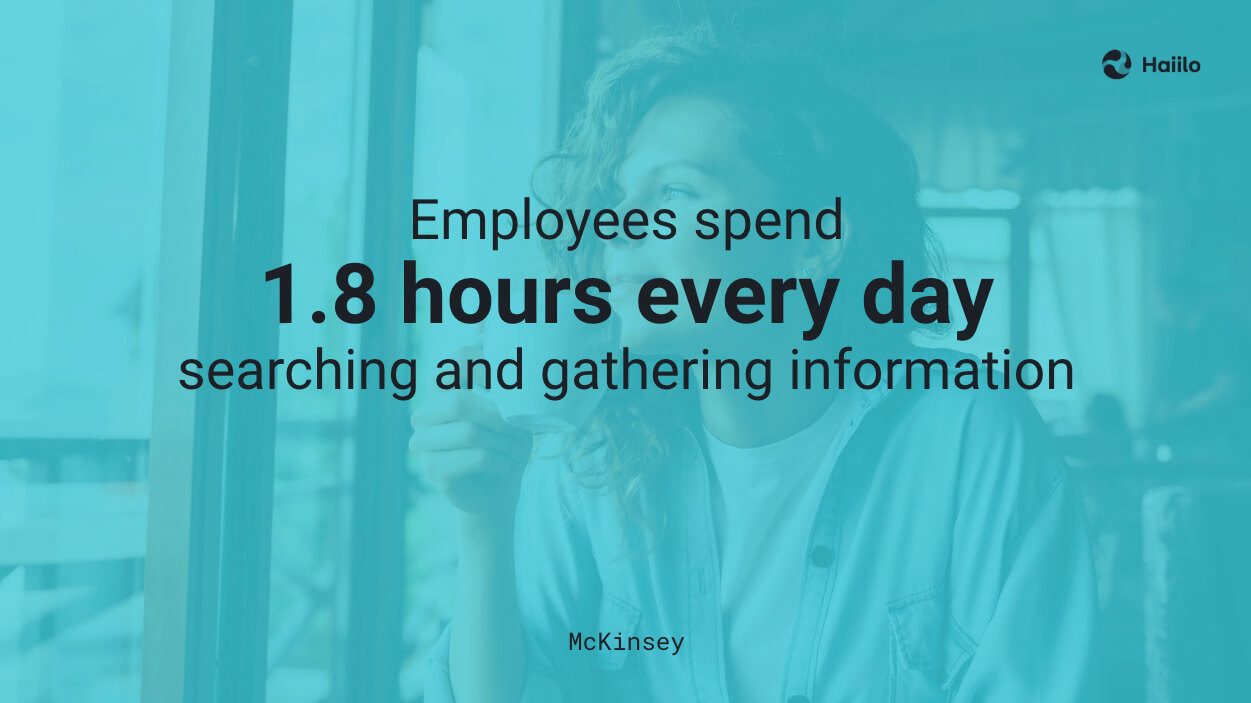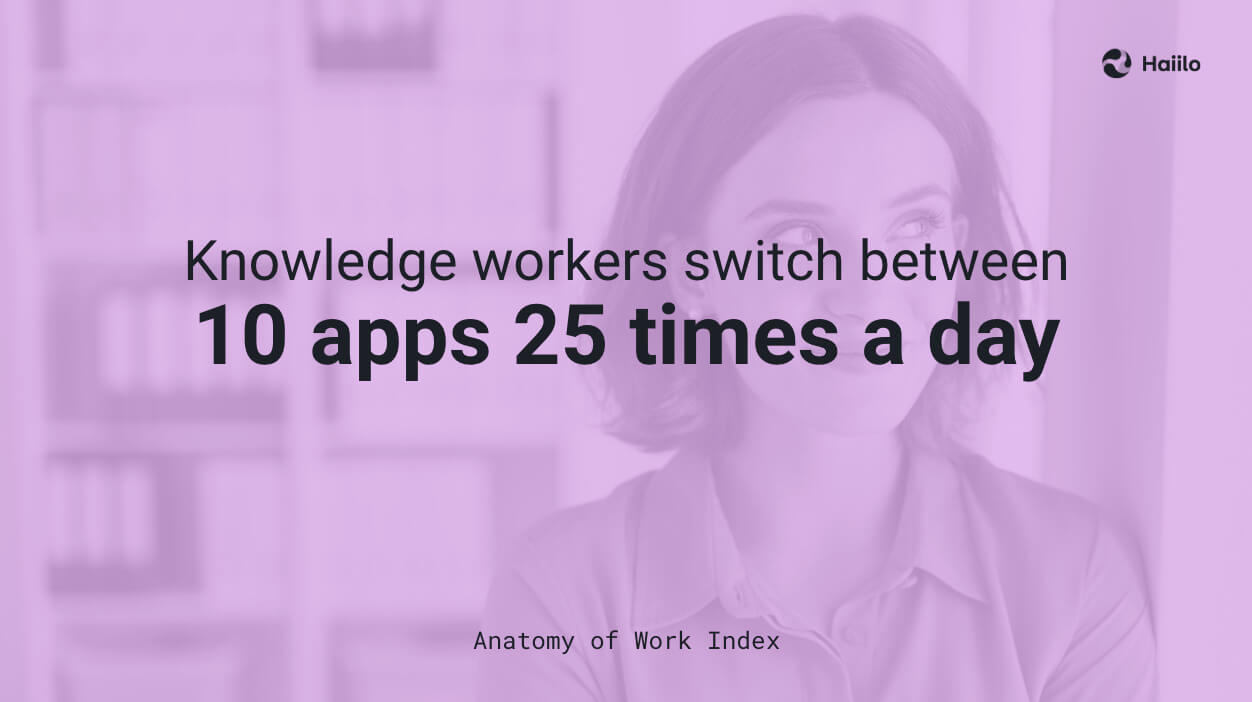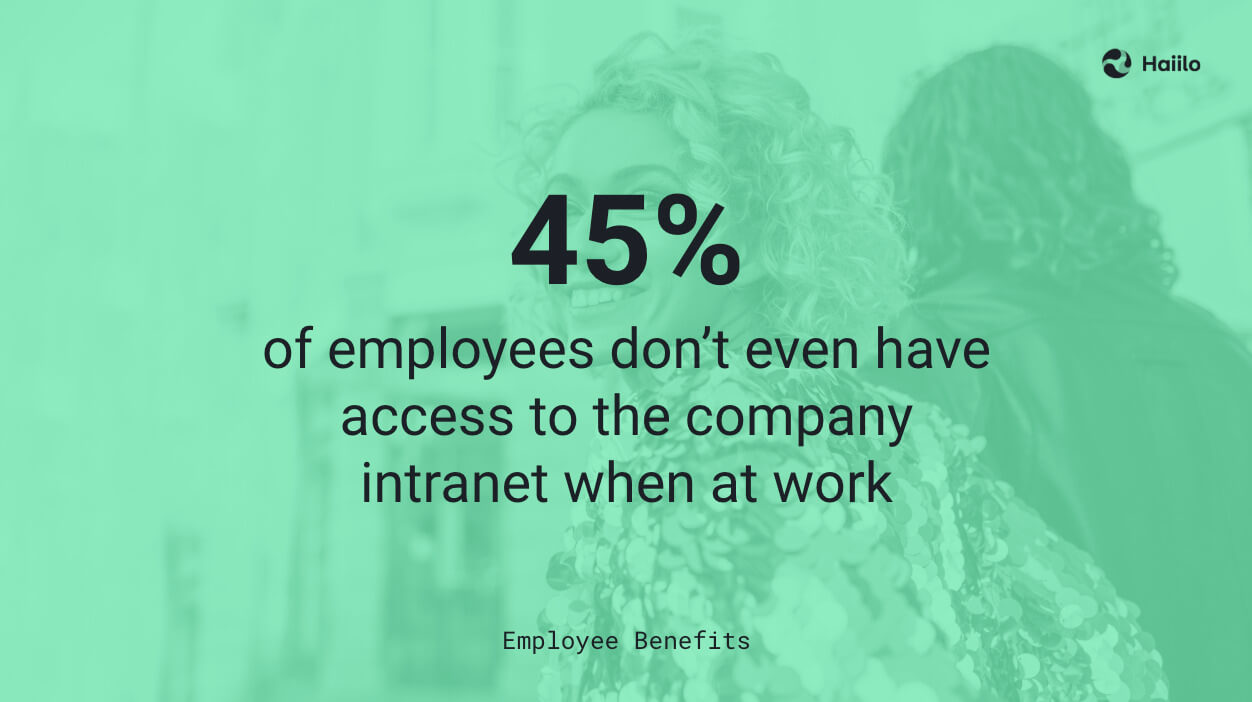Building a knowledge-sharing culture in your organization is necessary for embedding a knowledge-sharing mindset in every employee.
Companies need to do a better job of enabling their workers to seamlessly share their knowledge and motivating employees to share their expertise and acquired experiences on a daily basis.
This is particularly important for remote and hybrid workplaces in which employees can’t share knowledge in person but depend on technology to do so. This is why a proper workplace tech stack is critical.
So there are certain steps and best practices that can help employers optimize knowledge-sharing in their organizations and make it more impactful. In this blog, we will cover 9 essential steps for building, maintaining, and nurturing a successful knowledge-sharing culture in any organization.
Build a knowledge-sharing culture in your company with Haiilo!
- 1. Communicate the Benefits of Knowledge-Sharing Culture
- 2. Regularly Share Best Knowledge-Sharing Practices
- 3. Create a Central Knowledge-Sharing Hub
- 4. Improve the Overall Internal Communications
- 5. Practice Multichannel Communications
- 6. Motivate Employees to Participate
- 7. Give frequent feedback and recognition
- 8. Don’t Leave Your Frontline Employees Out
- 9. Implement Technology that Enables Knowledge Sharing Culture
1. Communicate the Benefits of Knowledge-Sharing Culture
One of the best ways to motivate employees to share knowledge is by explaining the benefits of it. The good news is that knowledge-sharing in organizations has many positives, and some of them include:
Less time spent on the search for information
When knowledge and information are not shared efficiently employees spend much more time searching for relevant and important information. In fact, information search is considered one of the biggest productivity killers in organizations.
According to a McKinsey report, employees spend 1.8 hours every day—9.3 hours per week, on average—searching and gathering information.

Less duplicate work
When knowledge and information are not easily accessible to employees, it is common for employees from different departments to work on the same tasks not knowing about it. One research proved that 83% of employees recreate documents if they can’t find them on the company network.
Career growth and development
Knowledge workers are often considered the best and most credible source of information in organizations. Employees who get such a reputation are more likely to be recognized for their work and promoted accordingly.
Improved cross-functional collaboration
Building a knowledge-sharing culture can help companies break down departmental silos and improve overall team collaboration.
According to research, employees now spend about 50% more time engaged in collaborative work, and it is critical that teams regularly share their knowledge, experiences, findings, and other insights relevant to their jobs.
Reduced knowledge and skill gap
Companies that nurture a knowledge-sharing culture are much more successful in closing the skill gaps. Big skills gaps are a growing challenge for many organizations and knowledge-sharing can be the best and most efficient way for eliminating it.
2. Regularly Share Best Knowledge-Sharing Practices
If you are just starting to build a knowledge-sharing culture in your company, think of ways to make the process more structured and easier for employees.
You can set rules for creating various channels and discussions about certain topics or projects. You can define preferred means of communication to make knowledge more accessible to everyone.
For example, instant messaging solutions which employees mostly use to communicate synchronously can’t be the place to store knowledge and information. The lifespan of these messages is short and not easily accessible at any given moment.
To store knowledge in a more efficient way and make it easy to find, you need to create a central knowledge-sharing hub – the single source of truth for every employee.
3. Create a Central Knowledge-Sharing Hub
Today, many remote employees communicate asynchronously, which is why information, documents, and data can live in many different places. These include instant messaging platforms, document management solutions, project management tools, social intranet software, and many others.
This often results in extensive app-switching and productivity loss. Asana’s Anatomy of Work Index 2021 found that, with excessive app switching 27% of messages and actions are missed. The same research found that knowledge workers switch between 10 apps 25 times per day.

As a consequence, knowledge that would otherwise be absorbed by employees gets lost.
To avoid this obstacle and enable a knowledge-sharing culture, it’s important that organizations integrate various platforms into a single source of truth.
Most organizations choose to implement social employee intranets into which they integrate tools such as Microsoft 365, Google Workspace, email, Slack, Trello, and other relevant solutions.
4. Improve the Overall Internal Communications
Unfortunately, one study showed that 60% of employees feel less-than-enthusiastic about internal communications in their organizations. 44% say that their business’ internal communications are stagnant, with nothing having changed in the past years.
Poor workplace communication is one of the biggest reasons why a knowledge-sharing culture fails. And the consequences of the lack of knowledge-sharing can be significant. According to research, only 25% of senior executives say their organizations are effective at sharing knowledge. The other 75% are taking a financial hit: Fortune 500 companies reportedly lose an estimated $31.5 billion per year because they don’t have effective strategies in place to encourage knowledge sharing across teams.
Companies with proper internal communications are much better in delivering targeted and timely communications to every employee hence ensuring that valuable knowledge reaches those to whom it matters.
On the other hand, internal communications departments that don’t have the ability to segment their audiences and send relevant information create too much noise and information overload. As a consequence, employees get overwhelmed rather than empowered with the new knowledge.
5. Practice Multichannel Communications
Multichannel communication is a term used to describe a workplace communication strategy in which multiple channels are used to deliver important company news and updates. This approach is critical for enhancing the knowledge-sharing culture and enabling people to stay informed and continuously expand their knowledge.
Unfortunately, the biggest challenge internal communicators face today is the inability to always reach the right audience with the right message at the right time.
Some departments use email, some use Slack, and some use Microsoft Teams as their primary means of workplace communication. So how can IC and HR professionals always ensure they send information via the right channels?
Multichannel communications aim to enable workplace communicators to use internal channels strategically – not to overwhelm employees but to keep them informed with relevant information. Essentially, multichannel communication significantly increases the likelihood of better reach and improved employee engagement.
📹 Check out our Masterclass: Strategies for Driving Employee Engagement in the Workplace
6. Motivate Employees to Participate
Sharing knowledge should be one of the core values of every organization. Because it takes years for someone to become an expert in a field, for businesses it is priceless to build such a culture.
Continuously enforcing employees to embed the knowledge-sharing mindset and behaviors is critical for maintaining and nurturing the knowledge-sharing culture and motivating employees to participate.
To give extra motivation to your people, you can consider launching a designated employee recognition program that will celebrate and reinforce knowledge-sharing behaviors and, therefore, encourage others to do the same.
For example, leadership teams can nominate top knowledge workers in their teams after which there can be a voting period during which others can vote for selected nominees.
Adding a little bit of gamification to your workplace initiatives can go a long way in making them more successful and efficient.
7. Ask Your Employees For Feedback
The best way to start improving knowledge sharing in your company is by asking your employees about it.
You can set up a simple employee survey to find out what your employees think about the current state of knowledge sharing and suggest recommendations for improvement.
Here are a few simple questions that can help you get started.
- I can easily find the information I need to do my job.
- I feel like I am continuously acquiring new knowledge at work.
- I can easily share knowledge with my colleagues.
- My organization does a good job of enabling knowledge sharing in the organization.
- Do you have any suggestions for improving our knowledge-sharing culture?
8. Don’t Leave Your Frontline Employees Out
When it comes to organizational communication and knowledge-sharing, frontline workers are often left in the dark. The biggest reason for that is the limitations of technology that these employees use on a daily basis. According to Statista, the population of mobile workers in the United States is forecast to increase from 78.5 million in 2020 to 93.5 million by 2024.
Another study found that over 83% of frontline workers don’t even have a corporate email address, and 45% don’t even have access to the company intranet when at work.

As a consequence, frontline workers don’t have an easy way to gain and share knowledge with their peers and they often miss out on important company information.
Mobile-friendly communication tools are the most critical prerequisite for better involving blue-collar employees in the overall knowledge-sharing culture.
9. Implement Technology that Enables Knowledge Sharing Culture
As mentioned earlier, workplace technology plays a critical role in building, maintaining, and nurturing a successful knowledge-sharing vulture in any organization.
While there are many different solutions that enable workplace communications, intranets have the reputation of go-to solutions for ensuring that knowledge is efficiently stored and distributed within an organization.
In fact, the intranet’s main job is to serve as a repository of all the important information, documents, people, and tools that employees need on a daily basis. It is considered a digital home for every employee, regardless of their location and the nature of their jobs.
Furthermore, these platforms are great for keeping people connected and ensuring a seamless flow of information between and among peers and departments.
Their ability to integrate critical workplace tech stack into a single solution is extremely valuable, especially for complex enterprises with complex organizational structures.










